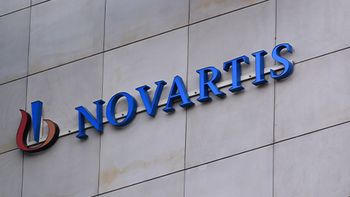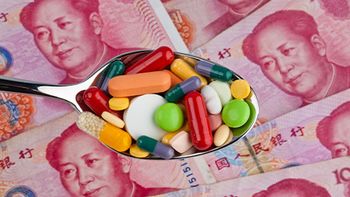
Battling the Cancer Drug Shortage: Q&A With Anshul Mangal, President of Project Farma and Precision Advance
Mangal discusses the causes of the shortage and how pharma companies can find solutions.
Pharmaceutical Executive: What caused the recent shortage in cancer drugs?
Anshul Mangal: The current shortage we’re seeing with cancer drugs stems from a combination of several factors including supply chain disruptions, manufacturing quality issues, and nuances within the generic drug market. The catalyst to the current cancer drug crisis can be traced back to an incident in the fall. A significant portion of pharmaceuticals sold in the US were manufactured overseas. In November, the FDA conducted an inspection at one of these overseas plants, owned by Intas Pharmaceuticals in India, and discovered multiple violations concerning quality control and data integrity. As a result, the plant halted production, initiating a chain reaction that led to a nationwide shortage of cancer therapy drugs. Prior to the shutdown, Intas was responsible for about half of the US's supply of cisplatin, a crucial cancer drug utilized in the treatment of various cancers. When production ceased at the plant, other manufacturers couldn't rapidly compensate for the shortfall, primarily due to a lack of surge capacity. This situation underscored the challenge pharmaceutical companies face in expanding production capacities when consistently operating at a certain market share. Consequently, the shortage of cisplatin prompted oncologists to shift to carboplatin, another essential cancer therapy, also previously produced by Intas. However, with Intas no longer manufacturing carboplatin and increased demand, this medicine is now facing a supply shortage as well, creating a ripple effect throughout the supply chain.
Additionally, many of the impacted drugs are generic and this market faces a number of challenges particularly when it comes to producing cancer medications. The low prices of generic drugs result in slim profit margins, compelling manufacturers to run near-maximum output capacity to cover costs, leading to financial instability. The competitive landscape for generic drugs is challenging, with only a few distributors buying these drugs, giving them significant negotiating power. As a result, there is little incentive for multiple companies to produce these generics. Quality control concerns arise as some manufacturers may cut corners to reduce costs, potentially violating quality standards and disrupting the supply chain. Moreover, the vulnerability of single suppliers and foreign manufacturing issues can significantly impact the availability of these drugs. If one of these entities encounters a problem, it can disrupt the entire international supply chain for that drug.
PE: How can shortages like this be avoided?
Mangal: To combat these challenges a combination of regulatory actions, industry reform and government intervention are necessary to ensure a dependable supply of these life saving drugs. While these are complex problems to address, a collaborative, multifaceted strategy across all stakeholders in the supply chain can help ensure that patients have reliable access.
Generally, steps like diversifying manufacturing sources for critical drugs, reducing reliance on a single manufacturer, and maintaining strategic stockpiles of essential medications are critical for preventing supply chain disruptions like the one we are currently witnessing. Ultimately, incentives for manufacturers to produce essential medications are crucial, particularly those with low profit margins.
Government intervention may be necessary in some cases to stabilize the market and incentivize drug production. To help rectify the current shortage, the FDA has taken steps to intervene by granting temporary authorization for Chinese company Qilu Pharmaceutical to import non approved cisplatin from China into the US and Canadian company Apotex to act as the drug’s US distributor.
A takeaway from this current shortage is the need for improved transparency across the supply chain. Implementing an early notification system can ensure timely responses to potential shortages. Several policy changes have been suggested to improve oversight and accountability from manufacturers like the Drug Shortage Prevention Act. Congress is currently assessing this proposal in which the FDA could implement a mandate ensuring manufacturers report anticipated shortages ahead of time. Investments in technology and automation could support an early warning system and improved monitoring and enhanced preparedness. By implementing these strategies collectively, the pharmaceutical supply chain can become more resilient and reliable.
PE: What can companies do during a shortage to survive?
Mangal: When facing drug shortages companies can employ a range of strategies to effectively manage the situation and ensure their continued operation. Key approaches include prioritizing essential drugs, reallocating resources to bolster their production, and establishing equitable allocation systems. Working closely with regulatory agencies to tackle any compliance issues is crucial.
Further steps include exploring alternative suppliers for raw materials and active pharmaceutical ingredients, streamlining supply chain operations for optimal efficiency, and activating emergency response protocols when needed. Open and transparent communication with healthcare providers and patients about the shortage is also vital.
Additionally, upholding stringent quality assurance procedures, retaining a skilled workforce, and considering innovative manufacturing techniques are significant considerations. Companies should also assess the resilience of their supply chains, collaborate with government bodies, set up patient assistance programs, and leverage the insights gained from managing shortages for long-term planning.
During a shortage, the survival of a pharmaceutical company depends on its ability to adapt, manage available resources efficiently, and work collaboratively with regulators, healthcare providers, and other stakeholders. Companies that take proactive measures to address shortages and prioritize patient safety are more likely to navigate the crisis successfully.
PE: What are the major access issues preventing drugs from reaching patients?
Mangal: A number of factors are contributing to the current access issues leaving an estimated half a million patients impacted. The primary issue is the shortage of essential medications in the market. These shortages disrupt the supply chain and make it difficult for healthcare providers to access critical treatments.
Healthcare providers are now forced to ration their limited drug supplies, which can result in reduced dosages for patients, potentially compromising the effectiveness of therapies. Additionally, the substitution of less effective alternatives may occur due to shortages, impacting the quality of patient care.
Some patients even resort to transferring to different treatment centers in the hope of accessing needed drugs, although this isn't always a feasible solution given the widespread shortages. Vulnerable populations, including financially limited cancer patients, bear the brunt of these shortages, facing hurdles in accessing alternative treatments.
The drug shortage crisis is particularly grave as it directly jeopardizes access to life-saving cancer treatments, potentially altering patient outcomes. This crisis disrupts the continuum of cancer care, resulting in delays, treatment modifications, and heightened stress for both patients and healthcare providers. Addressing these access issues is of paramount importance, particularly for the well-being of those reliant on critical medications, emphasizing the urgent need for effective solutions to alleviate this drug shortage crisis.
Newsletter
Lead with insight with the Pharmaceutical Executive newsletter, featuring strategic analysis, leadership trends, and market intelligence for biopharma decision-makers.





